Taverns, inns and coffee houses played a meaningful role in the expansion of Freemasonry (…)
The full article is now available for reading at the following link :
Taverns, inns and coffee houses played a meaningful role in the expansion of Freemasonry (…)
The full article is now available for reading at the following link :
The 1680s had been a difficult decade for London’s livery companies. The Crown’s attack on the ‘Whig’ faction and James II’s assault on the ‘Tories’ had caused them to surrender their charters and be purged of thousands of their members. Elizabeth I and James I had both extracted large sums from the companies. During the civil wars of 1640s and 1650s, it is impossible to know the exact amount they contributed to both the Crown and Parliament, mostly in loans that were never repaid. Against this backdrop of political attack, court action and financial stress, it is unsurprising that many members of the Masons’ Company were reluctant either to assume or to discharge the responsibilities of office. The Great Fire of 1666 destroyed 44 company halls and devastated their property portfolios, wiping out much of their rental income. The Masons’ Company was a going concern and by 1690 it went on its knees.
To pay for its royal charter, the Masons’s Company borrowed £800 from Anthony and Anne Light in return for 22 annual payments of £80. However, it was unable to meet its obligations and defaulted on the payments, increasing its debts. By the end of the 17th century, the Masons’s Company was so short of money that, in 1681, it agreed to have only a breakfast on Lord Mayor’s Day.
With the Rebuilding of London Act of 1667, the Parliament had unwisely removed for the building worker in London any economic or legal compulsion to join a Company or Guild, thus allowing any skilled labourer to work on the city’s reconstruction on the same terms as a freeman.
The Masons’ Company’s finances improved in the 1690s due to the return to political stability under William III and Mary II and through hard work, ingenuity and generosity, the Company’s finances were put back on a firmer footing.
In 1694, the Company applied for an Act to the London’s Common Council which required all those who worked as masons in London to join the Masons’ Company.
The Masons’ Company’s Act of 1696-1705 was an initial success, with 28 men admitted to the ranks between 1696 and 1705.
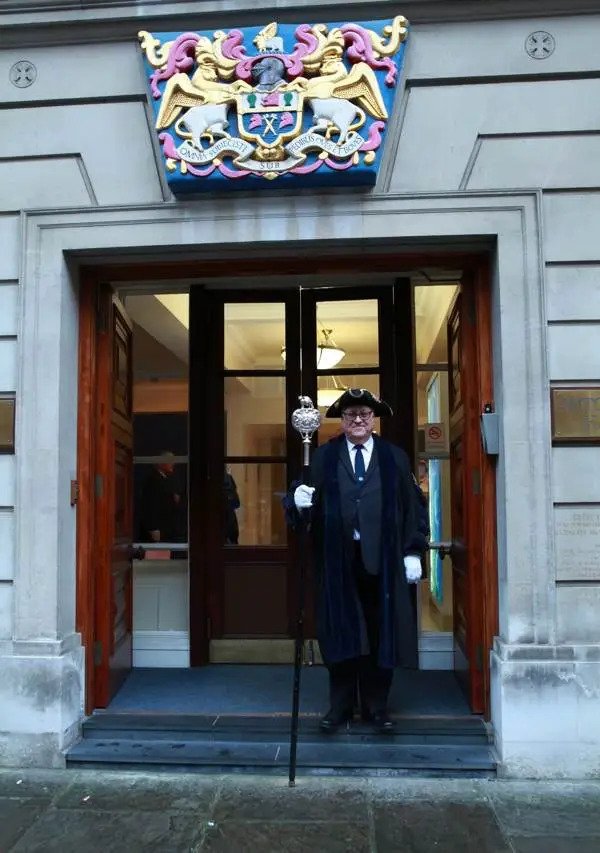
However, by 1706, the initiatives had run out of steam. To enlarge its membership, the Masons’ Company instituted two incentives: lowering its redemption fine from 36s to 3s 4d and offering a commission of 2s 6d for each admission. It seems that a lucrative market opened up at the Guildhall in redemption admissions because, following news that several other Companies were paying more for every member their ministers and officers brought , the Masons’ enhanced their gratuities to 6s.
This was an effective policy. In the 30-year period from 1676 to 1705 the Company had admitted 357 freemen but from 1706 to 1735 the number increased to 428.
More members meant more of their sons joining and receiving the freedom, which lead to more people paying quarterage and more people holding office.
David Gros or Le Gross, the Company’s clerk, was given one of the houses adjoining Masons’ Hall by the Court in January 1717 for his ‘good and faithful Services’ and efforts to introduce new members by redemption (i.e. by fee payment).
Le Gross was born in 1682 and was connected to the Gros or Le Gross of Cornwall. He was elected as clerk of the Masons’ Company in June 1708 and in 1717 he was serving as secretary to the governor and directors of the Bank of England. He probably ceased to work at the Guildhall, but he continued as clerk of the Masons’ Co, until February 1721. Le Gross was an important figure in early eighteenth-century London politics, finance and administration.
He was a prominent Whig and although not himself a Huguenot, he had connections with the French merchants and exchange brokers who established themselves in London’s stock exchanges and insurance markets. In 1708, Le Gross became Company clerk and introduced 21 admissions to the freedom of the Masons’ Company, five of which were exchange brokers. When the Masons’ Company court rewarded Le Gross for his efforts, they took particular note of the benefit and advantage the Corporation received from the many substantial Traders and others whom were recruited through his efforts. The Company’s intake of redemptioners in the early eighteenth century was cosmopolitan, with twelve of the 19 exchange brokers, admitted by redemption, not English. At least nine of those were Frenchmen wand identifiably Huguenot.
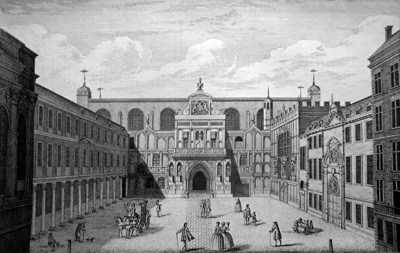
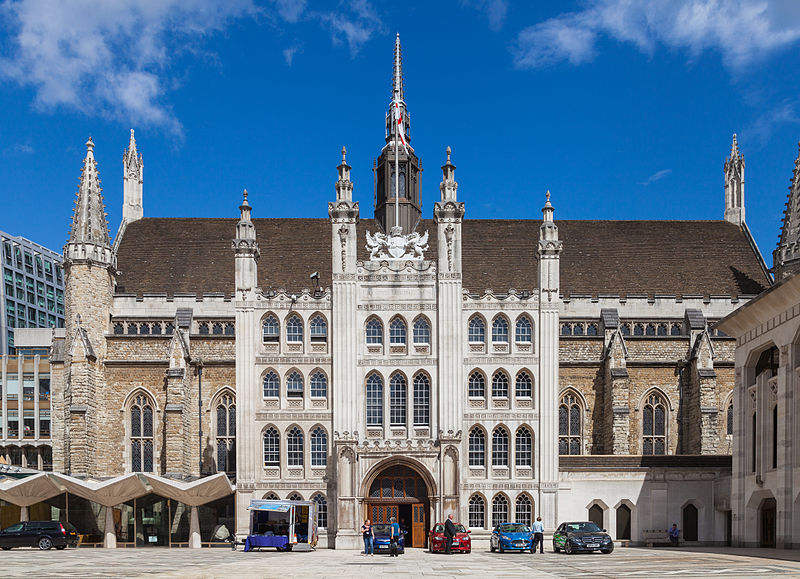
But the Company’s intake of international redemptioners was not limited to exchange brokers. Huguenots joined the Masons’ Company for the social and fraternal aspects of Company life, as it was a tradition in London, and to take the livery and thereby acquire the right to vote.
Two particularly noteworthy admissions by redemption were of women with French names, such as Mary Latour and Mary Paramor. Women had traditionally only participated in company life as wives or widows, but young women began to enter into corporate apprenticeships in greater numbers in the second half of the 17th century. As they completed those apprenticeships, they became eligible to join the Companies. In the first four decades of the 18th century, nine women – mostly business owners – took up the freedom of the Company by redemption. For example Anne Baker, who joined the Co. in March 1715, was a victualler in Finch Lane, while Anne Sparhawke and Katherine Wight, who were admitted to the freedom together in March 1735, were milliners and business partners.
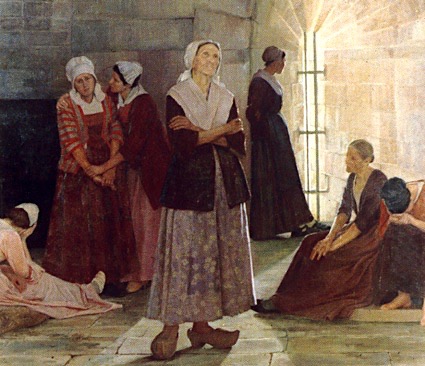
Certainly, this study has shown that Huguenots diffused quite extensively into the wider livery as, indeed, they did into London society generally. It seems also that the new entrants were easily absorbed into the Masons’ Company’s ranks. There is no evidence for religious division in the contemporary Masons’ Company, and not once was the confession, or indeed the nationality, of those joining the Company marked next to the name of an entrant. A much liberal way than today! As far as members of the Masons’ Company were concerned, at least according to the official records, the Huguenots -and indeed Germans and Dutchmen -who joined the Company, were no different to any other freeman of London.
Children of Huguenot descent were admitted to the Company by patrimony, and Huguenots bound their children as apprentices. Between 1706 and 1735, two dozen of the 428 men and women who joined the Masons’ Company were identifiably as Huguenot, making them five per cent of the population of London.
In the late eighteenth and early nineteenth centuries, City’s companies completed their transformation into ‘corporations concerned primarily with the administration of their valuable freehold and trust estates and with sponsoring convivial, charitable and educational activities. In its early eighteenth-century history, no more than a dozen of the 32 men and women admitted to the freedom in 1712 identified as masons. In 1724, the Company admitted two attorneys at the Lord Mayor’s court and a clerk in the town clerk’s office, and in 1734, just 29 of the 70 men on the Company’s livery worked or had worked in the craft of masonry.
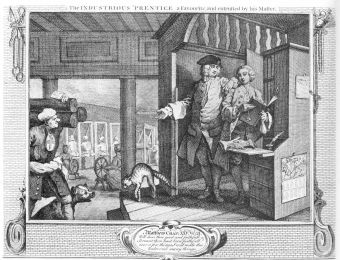
Throughout the 17th c. London Great Twelve companies had admitted more members unconnected with their traditional trades. As London’s workforce diversified and became increasingly specialised, the Masons’ Company’s membership began to disconnect from its traditional craft. This was a revolutionary development in the Company’s history and one with which Huguenots were clearly associated because none of those who joined the Masons’ Company were actually masons.
The Masons’ Company’s decision to lower its redemption fine and pay gratuities for referrals had long-lasting effects, helping to secure its future.
The Company experienced a remarkable turnaround in financial health by the end of the 17th century and certainly reached the nadir of its fortunes. In 1681, for example, it was so short of money that had agreed to have only a breakfast on Lord Mayor’s Day. In 1727, it was able to purchase £200 worth of interest-bearing stock and a property in Bishopsgate and in 1739, it spent well over £60 on food, drink, tobacco and music for the London Mayor’s Day. In 1680s and 90s the Co seems to have struggled to pay its pensions, yet in 1774, it was able to pay five men an annual pension of £2 each and seven widows one of £ 1 each. Membership of the Company was now much more attractive, worthwhile and fun.
Membership of the Company was, at the end of this remarkable period, much more attractive, worthwhile and fun and the change from operative into a speculative Freemasonry had thus just begun.
Extract from Ian Stone’s paper “Huguenots, Whigs and the Remodelling of the Masons’ Company, 1680-1740 – The Huguenbot Society Journal vol.35, 2022
Comte de Cagliostro, an enigmatic figure of the Age of Enlightenment, whose identity and motives are still up for deliberation, inspired both Alexander Dumas to write the novel The Memoirs of a Physician and Goethe’s five-act play Deer Gros-Cophta.
The world is divided over whether he was an adventurer, a compassionate individual who used his profound knowledge of alternative medicine to help the sick, a teacher of the occult, or a charlatan who preyed on gullible rich people. Some identify the Comte de Cagliostro with the Jesuit raised fraudster Giuseppe Balsamo from Palermo, Sicily; others think he was the Comte de Saint-Germain, an alchemist who had discovered the secret for ubiquosity–being in more places at the same time – and eternal life.
Whatever you may believe, there is little doubt, however, that Cagliostro’s power to seduce has lasted the test of time. He said: “The truth about me will never be written because nobody knows it”.
As for whence he came, he declared: “I am not of any time or any place; beyond time and space my spiritual being lives an eternal existence (…) my country is wherever my feet stand at that moment.”
On December 27, 1789, the self-styled Comte de Cagliostro was arrested in Rome and taken to Castel Sant’Angelo, where he was held until his trial before the Holy Inquisition Tribunal. He received the death penalty, which was later commuted to life imprisonment at the Forte San Leo, where he passed away on August 26, 2006, six years later. However, neither his grave nor body has ever been found.
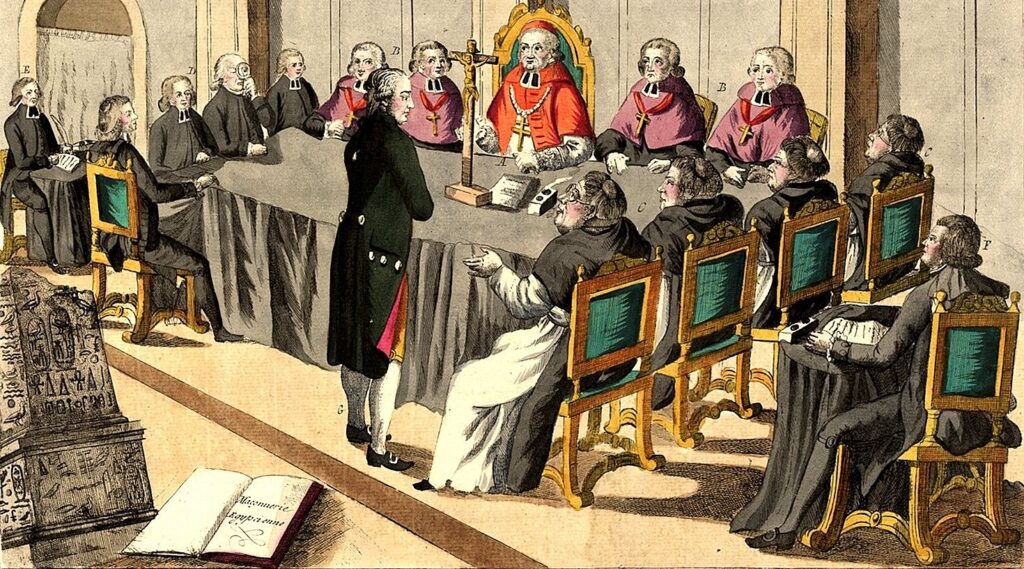
The self-styled Count was the founder of a new Masonic Order he called Egyptian under whose roof he attempted to bring both the Masonic movement and Christianity.
He founded the Mother Lodge of Egyptian Masonry in Lyons in 1784/86.
Cagliostro, the Grand Priest (Copt) of the Order, promised that he could lead his disciples to perfection and heal their bodies and souls. The philosopher’s stone would give his adepts immortality, the sacred talisman of the Pentagon promised them the obtain that innocence of spirit and perfection that belonged to Adam, the primal man.
THE TWO PROPHETS
According to legend, Comte de Cagliostro’s Egyptian Rite was inspired by the belief of immortality held by the prophets Enoch and Elias. Enoch, the seventh descendant of Adam (Jude 1:14), is said to have been “translated (by God) (so) that he should not experience death and he was never been found” (Heb. 11:5).
The term translated implies that Enoch was taken somewhere other than Heaven, which is a place where God dwells and where only a soul of the highest purity, such as Jesus Christ’s, can be allowed access.
Continue reading CAGLIOSTRO’S EGYPTIAN RITEA lo largo de los años la palabra “masón” se ha ido retorciendo a través del tiempo, desde formar organizaciones secretas que son dueñas del mundo hacer tener en control el poder tanto político como económico. Una de las preguntas más desafiantes que me ha tocado desafiar es ¿realmente todas estas especulaciones son verdaderas?,¿los masones son en verdad lo que dicen ser? A lo largo de las investigaciones que hice, lo único que encontré fueron más preguntas de las que esperaba encontrar.
Vamos a empezar con lo esencial ¿Qué es la masonería? La masonería es una sociedad secreta que junta a varios individuos con un sentimiento de fraternidad. El objetivo principal que tienen es la búsqueda de la “absoluta verdad”, creen que con el encuentro de la verdad el hombre evolucionara en todos los aspectos. Ellos tienen un templo al cual le llaman logias y también le llaman así al grupo de masones que se reúnen. Hacen un tipo de “cultos” que son llamados tenidas, ahí se encuentran todos los miembros una vez al mes, pueden hacer el ritual apropiado para iniciar a los nuevos miembros, ascender de rango a un miembro y/o debaten sobre los temas simbólicos y sociales. Todas estas reuniones son bastantes decoradas ya que los masones son bastantes cuidadosos en el tema de la decoración, en sus encuentros se puede observar como tienen todo muy bien mantenido, hasta se enfocan en el ámbito de la música ya que contratan a orquestas profesionales para sus encuentros de aniversario (la tenida que describo se llama “Gran Tenida Blanca por el 192 Aniversario Patrio” toda recomendación que dé, al final del texto pondré los links para acceder a ellas). Ustedes se preguntarán ¿Por qué son tan detallistas los masones?
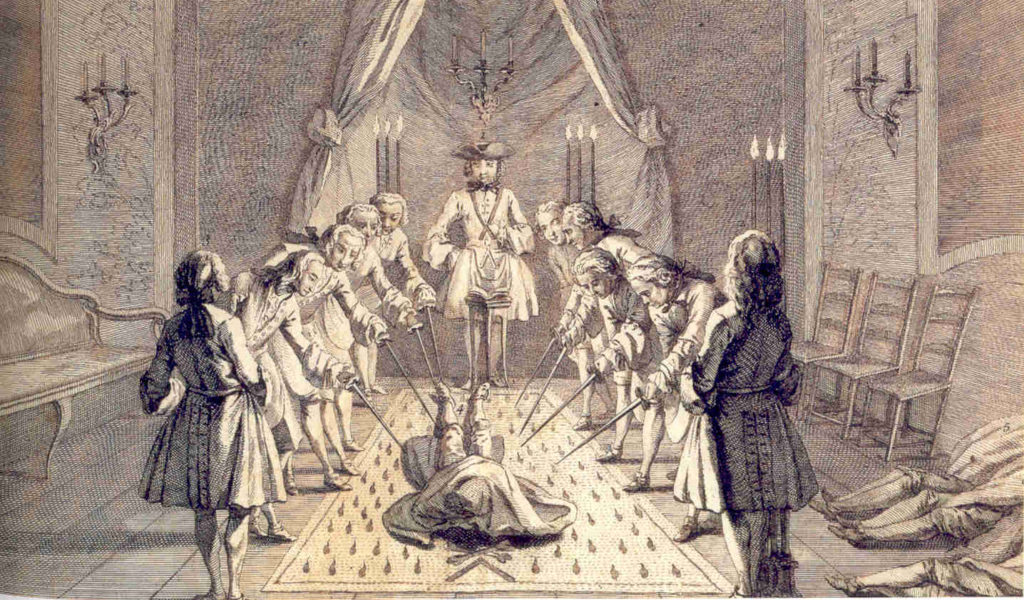
Los masones no son los únicos en fijarse en los detalles de sus encuentros, todas las religiones y métodos de creencia son detallistas ya que si encuentras un lugar todo sucio nadie va querer entrar ahí, no llamaría demasiada la atención y obviamente se requiere más miembros porque cada creencia quiere abarcar la mayor gente posible, sin embargo, queda otro punto más ya que los masones no buscan a cualquier persona, buscan a individuos con ciertas influencias o sino no tendría el poder que tienen ahora, y ¿Qué tiene ver el último punto con ser detallistas? Evidentemente todo esto es una táctica, porque eso demuestra el poder que tienen los miembros unidos. Es increíble como los menores detalles influyen en todo esto.
Ahora vamos a la parte más etimológica de lo que nos convoca hoy día. Logia proviene del italiano loggia que eso significa en español galería y a la vez proviene del francisco ripuario laubja, que significa “cobertizo enramado”. Bueno ustedes se preguntarán ¿qué sentido tiene todo esto? toda esta etimología fue para explicar que el significado galería hace mención a las juntas, porque en el siglo XIII los albañiles empezaron a hacer juntas secretas contra los frailes, las juntas las hacían en lugares que no estaban los frailes como los cobertizos. La palabra masón es la que me llamo más la atención, ya que en albañil en inglés es masón ¿y que relevancia tiene eso? La creencia masónica se dividió en dos corrientes la regular (que es la tradición anglosajona) y la liberal (tradición francesa) eso demuestra que desde esos años (hablamos del siglo XIII) ya había conflicto entre ingleses y franceses. Lo que más admiro de todo esto es la gran cantidad de participantes que tiene independiente de que corriente tome, como una sencilla reunión de albañiles vaya tomando tal fuerza que llegue hasta otro país.
Continue reading Influencia de la Masonería en ChileScholars of the Craft divide the history of Freemasonry into two distinct periods. They mark 1717 as the year when the first period, known as Operative, ended and the second period, called Speculative, began. This is the classic division of the History of Freemasonry, although other classifications have been formulated, many of them bordering on fantasy and absurdity.
The historians themselves can be divided in two groups: those who lost their reason in the search for dubious or extravagant origins of Freemasonry, and those who complained about how hard it is to establish the theory that is closest to the truth. The Masonic historian and Anglican minister John Sebastian Marlow Ward [1] , was of the opinion that Freemasonry originated from the Knights Templar, one of the three major Christian military-religious orders established in Holy Land during the Crusades. Andrew Michael Ramsey [2] was actually the first person to have advanced such argument. Ramsay was a catholic Scotsman who lived a good part of his life in France , where after James III had made him a baronet in 1735, became more commonly known as Chevalier Ramsay. In England he had been initiated in Freemasonry on March 10, 1730 at the Horn Lodge, that met in Westminster. In 1737 he was in France and occupying the office of Grand Orator of the Order when Cardinal Fleury [3] prevented him from giving a lecture[4], later published, in which he declared that Freemasonry saw the light in the Holy Land during the time of the Crusades and had been founded by The Knights of the Temple or Templars[5]. There is little to prove this theory but at least it presents a more plausible argument than that of some other authors who claim that Freemasonry had the same origin as and dated back to the time the world was created (George Oliver[6]); that “God and the Archangel Saint Michael were the first grand masters of the first Lodge of the Freemasons established by the sons of Sete, after the fratricide of Cain” (Enoch); that “Patriarch Adam, faithful to the instructions received from the Most High, formed the first lodge with his children” (Marc Bédarride[7]); or that Freemasonry comes from God himself and begins in the time of chaos.
These are Ramsay’s words with reference to the noble and Christian character of the Freemasons :
“(…) We must not take the word Freemason in a literal (…) and material sense, as if our founders had been simple workers in stone or merely curious geniuses who wanted to perfect the Arts. They were not only skilful architects (…) but also religious and warrior Princes who designed, edified and protected the living Temples of the Most High. And (…) whilst they handled the trowel and mortar with one hand, in the other they held the sword and the buckler. We must therefore consider our order as (…) an order founded in the antiquity, renewed in the Holy Land by our ancestors in order to recall the memory of the most sublime truths amidst the pleasures of the society.”
In “Les Plus Secrets Mysteres des Hauts Grades (iii., 194), M. Berage added more ground to the Templar theory by writing: “The Order of Masonry was instituted by Godfrey de Bouillon[8], in Palestine in 1330 after the defeat of the Christian armies, and was communicated only to a few of the French Masons sometimes afterwards, as a reward for the services which they had rendered to the English and Scottish Knights”.
At the end of the tragic third Crusade, the knights and their supporting civilians sailed from the Holy Land and headed west. Amongst those men you would have found monarchs who were returning to their Kingdoms, Princes who would later ascend to a throne, Lords whose wealth had risen tenfold during their term in Palestine, and some knights of a lesser noble lineage who would only have received life lasting privileges as a reward for their services. The whole Christendom held the Templars in high regard and considered them to be the guardians of mystical doctrines and secrets discovered in Jerusalem , the holiest city on earth; the same secrets on which the Freemasons claim they found their Order.
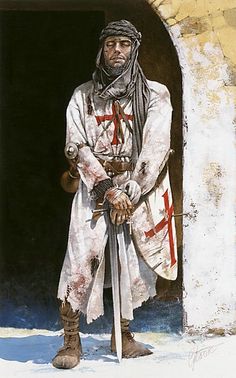
Ramsay also believed that Freemasonry had reached England from Scotland as he wrote : “John, Lord Stewart or Grand Master of the House of the King of Scotland, brought our science from the Holy Land in 1286 and established a lodge at Kilwinn in Scotland in which he received as freemaçons the Earls of Gloucester and Ulster. Since that time, the old Kingdom and intimate ally of France was the depository of our secrets, the Center of the order and the conservator of our laws. From Scotland, our society spread in England, under the great Prince Edward, son of Henry III”.
But Ramsay was a Scotsman seeking to obtain the support of the King of France and of the Pope for the restoration to the throne of England, Scotland and Ireland of the catholic House of Stuarts. It is not therefore unreasonable to say that Ramsay probably came up with such a singular story, that wrapped Freemasonry in a blanket of religious greatness, principally to please and indulge both the Church State of Rome and catholic France. The plan did not come together but what Ramsey succeeded into, was to plant seed that gave birth to the Masonic Higher Degrees Orders , to which the aristocrats of all Europe flocked in vast numbers. Indeed, the Baron Karl Gotthelf von Hund [9] used Ramsay’s romantic account as the principle upon which he founded the Rite of Strict Observance [10].
In the paper “Ramsay and his Discours revisited” , Brother Alain Bernheim[11] summed up the life of the exiled Scottish Freemason in these words : “What he did and chose not to do, what he thought and chose not to write, can be summarized in a few words : he was a true Jacobite, poor and, most of all, dependent on the good will of various groups of persons–French aristocrats, Stuart exiles, Freemasons of different origins – whose opinions were different. And he needed them all”.
Disappointing as it may seem to the devotees of fanciful and patriotic theories of the birth of the operative Freemasonry on the British isles , the provenance of the phenomenon is actually rather different from that recounted by the Scottish Chevalier. The Masonic historian Bernard E. Jones [12] in his Freemasons’ Guide and Compendium, wrote: “the old-fashioned Masonic books , so often tell a story that is more romantic than factual and repeat fallacies that should long ago have died a natural death”.
The operative Freemasons that appeared across the Channel in the Middle Ages were only native rough stone-masons who benefited of the superior knowledge imported by greatly skilled laborers from the Mediterranean basin; a geographical region which had for millennia been the source and the guardian of all Arts. The true genesis of operative Freemasonry is found in an era that predates the Holy Wars and witnessed Rome , with its mighty Empire and superior civilization, rule the western world!
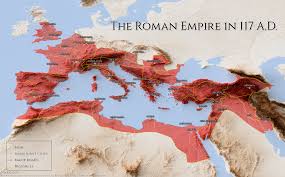
The Romans were extraordinary builders who had learned the art of constructions from regions of their dominion like Greece , Egypt and the Middle East, whose populations had even older knowledge and traditions than theirs. The Romans improved and perpetuated those skills through the specialised Collegia that they instituted throughout their Empire. The higher Roman education curriculum included the teaching of the Artes Liberales (Liberal Arts) like languages (Latin and Greek), written composition, rhetoric, philosophy, Law, Maths. But there were also Collegia that specialised in practical subjects like ship-making, bakery , wine-dealing, medicine, and even brothel keeping! Some of those teaching institutions were also active and particularly influential in politics. There was probably also a very large presence of Collegia throughout the Empire, because in Roman Law it sufficed to have had an ensemble of three teachers to receive the appellation of Collegium.
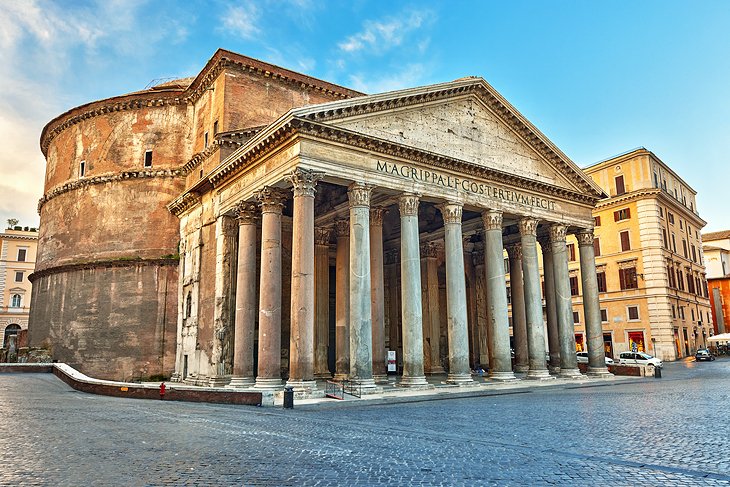
Each Collegium had its own constitution and regulations on both religious and secular matters. It was also organised like a modern Masonic lodge with a Master and two guardians to preside over a membership of three grades : apprentice, companion, and teacher.
In addition to excelling in the Liberal Arts, the Romans were also great soldiers. Their Army did not just consist of disciplined and brave soldiers who fought fearlessly in single combat. The Roman legionaries benefited also from an efficiently run and organised military war machinery that consisted of auxiliaries. These were highly skilfull civilians who travelled with the troops and provided them with relief and support. They were engineers specialised in building bridges, fellows who set up and run the military encampments, cooks, priests, craftsmen who forged and repaired arms, hostlers who looked after the horses, physicians and members of many other professions. Those men congregated in groups which were the precursors of the Guilds and were the forerunners of the Middle Ages Freemasons with their Associations.

THE MAGISTRI COMACINES
Speculative Freemasonry , the kind that we take part in nowadays, is only a few centuries old. In contrast, the operative Freemasonry belongs to a much earlier Era and sprung out neither from native Scottish or English semi-barbarians stone-masons nor from infiltrated Knights and former Crusaders, but from a group of skilled Master Builders from the Italian peninsular. They were the men who maintained “the light of the arts alive” through the Dark and Middle Ages.
The hoards of Barbarians who in the IV century descended from northern Europe and occupied the western provinces of the Roman Empire, sought to wipe out every form of that remarkable civilization before , in time, eventually adopting it themselves. The Eastern part of the Roman Empire – identified in history as the Byzantine Empire, with Byzantium [Constantinople] as capital – was one of those territories left untouched by the destructive waves of Barbarian together with a few other confined provinces both on the Italian Peninsular and in the rest of Europe.
The isle of Comacina on Lake Como is one of those territories that kept its independence and became the new and secure home of scholars of the Roman Arts and Sciences. Presence of substantial stone quarries near Como, in what was the Lombard Kingdom of Northern Italy, was also a contributory factor for settling in that area. The Comacines craftsmen were a tight and powerful society of builders and were also known as Masons Magistri where the word Magistri comes from Magister which was a higher Roman College. They could design and build almost everything , having a broad grasp of many Arts including sculpture,painting, mosaic work. The Comacines preserved civilization until the Barbarians themselves became ready and accepted communal life and peace. According to Albert McKay : “The Longobards who had come from northern Germany , settled in northern Italy in c. 568/569 and employed the Comacines for their construction work in what is now identified as Lombard Architecture, famous all over Europe”. The earliest known written reference to the Comacines was in the Edictum Rothari issued by the ruling Lon(go)bard King Rothari in the year 643, centuries before the first Crusade!
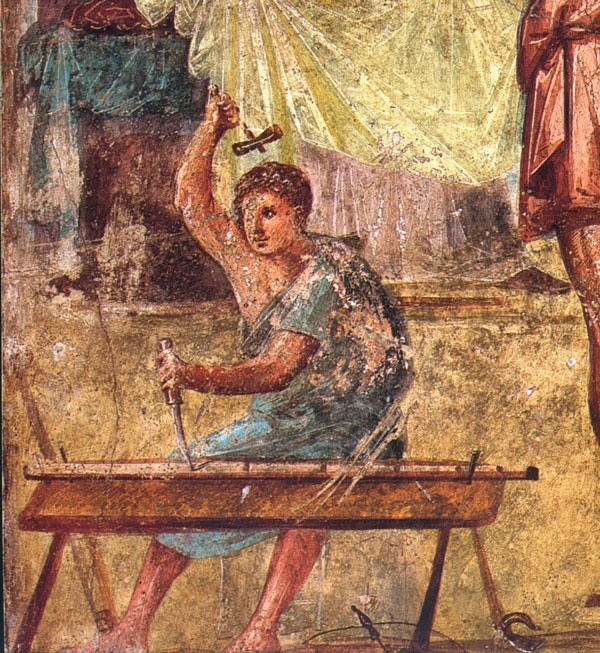
One of the symbols of the Comacines Masons was the “Comacines Knot” or “Solomon’s knot” or “Sigillum Salomonis” in Latin. It represents time , the “immortality and eternity” of the Comacines’s great work, but also the ancient hidden forces that regulate our Universe. The symbols of the endless, interwoven cord (Italian Intreccio) and the “lion’s paw” are further and more recent Comacines’s trademarks; almost every Cathedral and religious edifice they built had their logo affixed, by way of a signature, on the stonework. We can find their traces in Europe as far north as Sweden and as far south as Sicily.
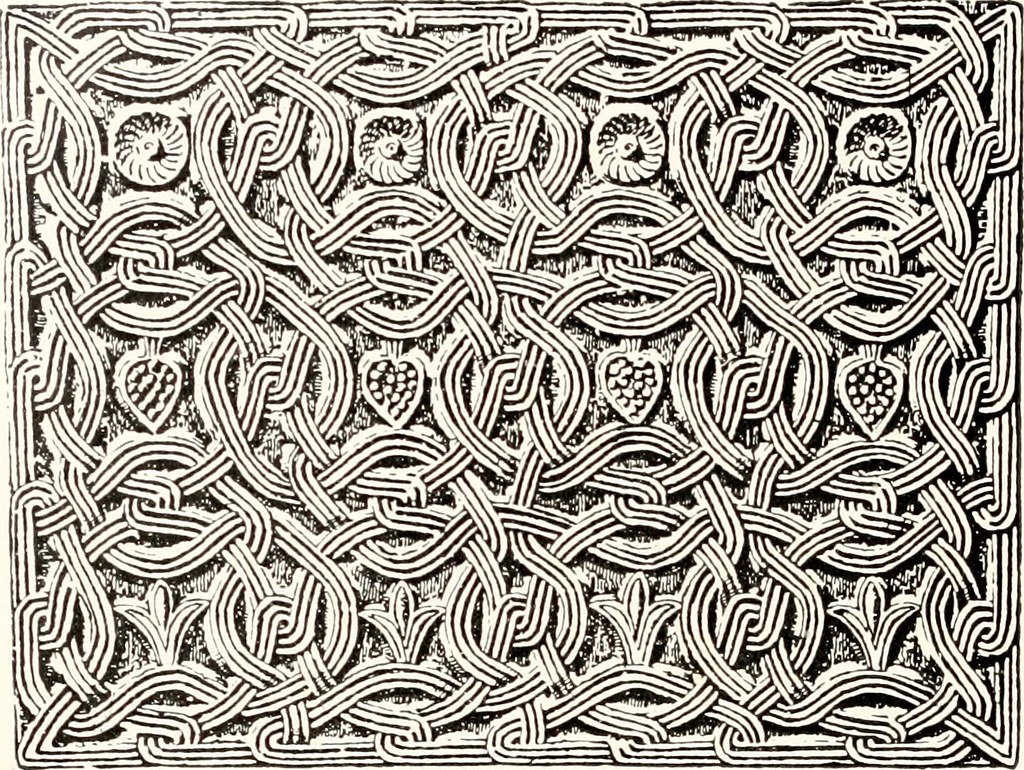
An interest in the Comacines was shown for the first time in the early 20th century by Lucy Baxter , described as the first woman to have written about that topic in the world of Freemasonry. She adopted the pen-name of Leader Scott and wrote a book entitled “The Cathedral Builders” wherein she mentioned and described the “Magistri Comacines” as the ancestors of the Freemasons. Little more was subsequently mentioned on the subject by Masonic authors and historians, perhaps in an effort to preserve the legend of Freemasonry having been established under the protection of catholic sympathetic monarchs on the British isles by Scottish knights who had returned from the Crusades and some others who had escaped persecution in France.
Thomas Hope [13] in his “Historical treatise on architecture” declared: “The [Comacines] builders and sculptors formed a single great fraternity whose aim was to find work outside of Italy. In fact, distance and obstacles were nothing to them.” They travelled East under the Lombard Dukes and went to England with the Italian Benedectine monk (Saint) Augustine [14] who Pope Gregory the Great(Gregory 1st) [15] had chosen to lead a mission to convert King Aethelbert [16] of Kent in 595. Augustine became the first Archbishop of Canterbury !
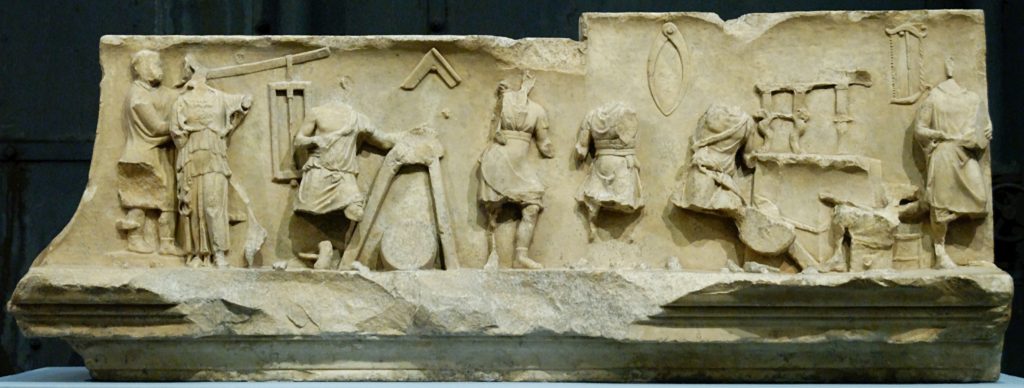
The Comacines also travelled to France under Charlemagne [17] – King of the Franks and subsequently the Holy Emperor of Rome – and to Germany, first under (Saint) Boniface [18] and later under (Saint) Albert the Great [19]. Indeed, the Comacines can be encountered everywhere throughout the centuries. They mostly worked for the Church State of Rome in all those places where Christian missionaries had preceded them and prepared the ground. “In those times of constant war and struggle, of military service and feudal slavery, [the Church] was the only asylum for those who wished to cultivate the arts of peace”, wrote Hope. Only in this contest one can accept Ramsay’s statement of Freemasonry being strictly Christian. For the historian Albert Mackey [20] , Freemasons are indebted to the Catholic Church and to those masons [the Comacines]. “We, Speculative Freemasons” he wrote “should give full credit to the Roman Church for employing and fostering our Operative Brethren through many centuries and making possible the speculative Freemasonry of today (…)”.
When in the year 1000DC the world did not end, as people expected ,the high dignitaries of the Church and various Lords expressed their relief and joy by commissioning works dedicated to God. They spent their money in erecting cathedrals, abbeys, convents and churches between 1066 and 1189. J. S. M. Ward wrote: ‘The Comacines travelled from place to place to find work. When a church or castle was finished, they had to go elsewhere”. Have you never realised , when visiting ancient magnificent castles and cathedrals, that there is an extraordinary similarity in their details and general architectural style even though they may be in different parts of the country or even abroad?
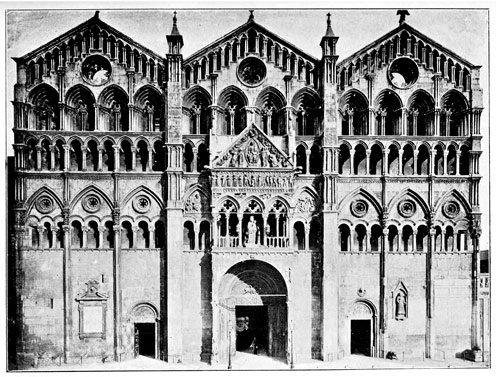
Thomas Hope expanded this concept by writing: “A corps of operative Freemasons would appear in a city or place near the castle of a great lord who wished to build a church or expand his castle. They were under the rule of a Master chosen from among them, who nominated one man in ten as Warden to oversee the other nine. First they erected temporary huts for their own use, and then a central Lodge. If they needed help with the hard work, they called in the local Guild masons, but they do not seem to have admitted them to the assembly in the Lodge with which they opened the work each day. They met in secret, only the Freemasons were present, and with a Tyler to guard the door against the cowans and spies.”
In History of Italian Architecture , the Marquess Amico Ricci [21] noted that the Comacines were free to travel about at will. When the missionaries came to England from Rome to spread Christianity, they brought with them many of those men and monks experienced in the art of building whose services would be indispensable to raise or modify the edifices required by the disciples for their devotion. The Italian Chronicles record that Pope Gregory I sent the missionary monk Saint Augustine to Britain in the company of several Masons capable of building churches, oratories and monasteries on the island. Two centuries later a Pontiff with a similar name to the former, Gregory III [22] , dispatched Saint Boniface to Germany with “credentials, instructions and a large following of monks versed in the arts of building and of lay brethren who were also architects, to assist them”. One of the first issues of the Encyclopedia Britannica, says E. Jones, mentions that “the Masters from Como [the Comacines] were fraught with Papal Bulls granting to them the right of building directly and solely for the Church of Rome. They gained the power to fix the price of their labour and to regulate their own internal government, exclusively in their own general chapters, prohibiting all native artists not admitted into their Society from entering into any sort of competition with it. Wherever they came, they appeared headed by a chief surveyor who governed the entire troop, and out of every ten men they designated one, named Warden, to overlook the nine others. The architects of all the sacred edifices of the Latin Church (… ) derived their science from the same central school; obeyed in their designs, the dictates of the same hierarchy, and rendered every minute improvement the property of the entire body. It is claimed that from this company of travelling masons is derived “the fraternity of adopted masons, accepted masons or freemasons.”

As work on the splendid castles and cathedrals extended over many years, a close association of the Comacines with the local masons became unavoidable and the two groups eventually blended. But ,although the Comacines were in some way what the Guild Masons subsequently became, their Order predates the latter by some significant time. It is also responsible for passing on to the native islanders the methods and doctrines of the ancient Art of construction and the custom of gathering into Guilds. The Comacines were possibly the truly first operative Freemasons in Europe, and therefore of the British Isles too.
The Masonic historian , Reverend Joseph Fort Newton [23] , in the 1914 issue of The Builders wrote: “With the conquest of Britain by the Romans, the Collegia, without which no Roman society was complete, made their advent into the island (…) Under the direction of the mother College at Rome, the Britons are said to have attained to high degree of excellence as builders, so that when the city of Gaul and the fortresses along the Rhine were destroyed, [the Roman Emperor] Constantius Chlorus , in AD 298, sent for architects from Britain to repair or rebuild them”.
After the Romans gave up their attempt to submit the British isles and withdrew, nothing is heard of the Comacines Master Builders until 598 AD when Bishop Wilfred of York [24] sent for some Masons to return and build in stone “after the Roman manner”. In The Builders, Newton describes the Comacines in these words “They may not actually have been called Freemasons as early as Leader Scott [akas Lucy Baxter] insists they were, but they were in fact free[men], travelling far and near wherever there was work, following Church missionaries to England (…)”.
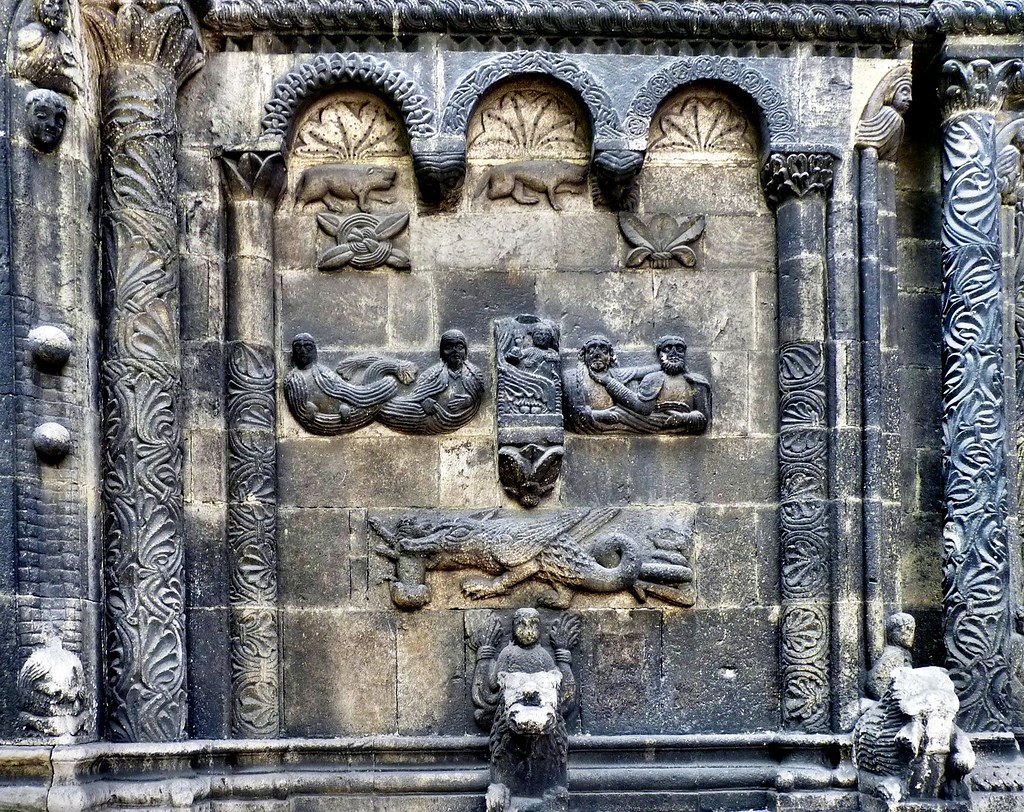
CONCLUSIONS
Of all the building works carried out in every corner of the European Continent between 800AD and 1000AD , the best part was produced by the Comacines Master Builders akas Magistri Comacines akas Builders of the Order of the Cathedral.
R.F. Gould [25], in the original edition of his Concise History of Freemasonry, speaks his mind clearly : “At the present day the idea of there having been, in the early part of the 13th century, Colleges of Masons in every country of Europe which received the blessing of the Holy See, under an injunction of dedicating their skill to the erection of ecclesiastical buildings, may be dismissed as chimerical”. Only the Comacines received that seal !
We Freemasons should cease to give our Fraternity an impossible antiquity and accept that neither Scotland or England were its birthplace. The story that the Templars fled to Scotland after their Order was destroyed in France in 1307 by King Philippe le Bel [26] and that having kept all their beliefs and traditions alive, resurfaced centuries later as Freemasons, is dismissed as fiction by many Masonic scholars. “All this is speculative…because there is absolutely no historical evidence of the existence of a secret society specifically based on the (fugitive) Templars”, writes John J. Robinson [27].
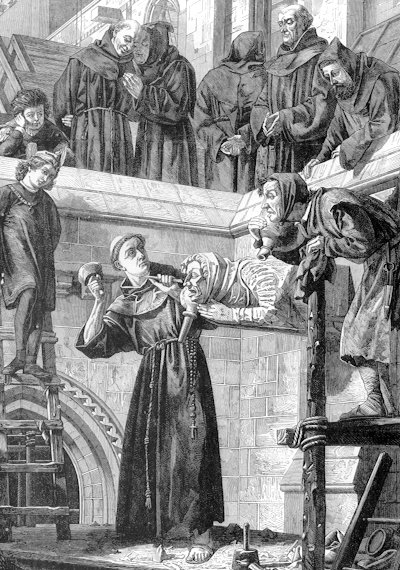
The Comacines Order had lodges, Grand Masters, secrets (they kept a secret book called L’Arcano Magistero) , wore aprons, dispensed charity, possessed means of identification and employed symbolism like the square , compasses, mosaic pavement , Solomon’s knot and so forth and , like in the speculative Freemasonry, its members were divided in degrees.
The Comacines Magistri Order was considerable older, more skilled, more artistic and pious than that of the Templars and of the Guild Masons and ultimately prove the theory – as it remains such , albeit a more plausible one than that in many Masonic books – that Freemasonry came from ancient Rome [28].
By Sirbelius
[1] John Sebastian Marlow Ward, born in Belize 22.12.1985, died in Limassol, Cypru, 2.7.1949
[2] Andrew Ramsay was born in Ayr, Scotland, in 1686, and died in Saint-Germain, France, in 1743
[3] André-Hercule de Fleury, (born June 22, 1653, Lodève, Fr.—died Jan. 29, 1743, Paris), French cardinal and chief minister who controlled the government of King Louis XV from 1726 to 1743.
[4] which was published in 1738
[5] The Poor Fellow-Soldiers of Christ derived the name for which they have become famous in history, by having established their Order’s headquarters next to the Temple of Solomon in Jerusalem.
[6] George Oliver, D.D. was an English cleric, schoolmaster, topographer, and writer on freemasonry. Born: 5 November 1782, Papplewick Died: 3 March 1867, Lincoln
[7] Marc Bédarride ( was a jewish Napoleonic military officer, French writer and a Freemason. He founded the Masonic “Egyptian Rite of Misraim” in 1813.
[8] Godfrey of Bouillon was a French nobleman and one of the pre-eminent leaders of the First Crusade. He was the first ruler of the Kingdom of Jerusalem from 1099 to 1100. Born: 18 September 1060, Baisy-Thy, Genappe, Belgium ; Died: 18 July 1100, Kingdom of Jerusalem ; Place of burial: Church of the Holy Sepulchre, Jerusalem
[9] Karl Gotthelf, Baron von Hund und Altengrotkau (11 September 1722, Unwürde – 8 November 1776, Meiningen) was a German Freemason who in 1751, he founded the Rite of Strict Observance.
[10] The Rite of Strict Observance was particularly devoted to the reform of Masonry, with special reference to the elimination of the occult sciences which at the time were widely practiced in many Masonic lodges
[11] “Ramsay and his Discours revisited” by Bro. Alain Bernheim ( born 1931 Paris, France )
[12] Bernard E. Jones , P.A.G.D.C., Freemason member of Pen and Brush Lodge N. 2909, UGLE, and of the Research Lodge Quatuor Coromatorum
[13] Thomas Hope (30 August 1769 – 2 February 1831) was a Dutch and British merchant banker, author, philosopher and art collector
[14] Augustine of Canterbury (born in Italy in early 6th century – died probably 26 May 604) was a Benedictine monk who became the first Archbishop of Canterbury in the year 597. He is considered the “Apostle to the English” and a founder of the English Church
[15] Pope Gregory I, commonly known as Saint Gregory the Great, was the bishop of Rome from 3 September 590 to his death. He is known for instigating the first recorded large-scale mission from Rome, the Gregorian Mission, to convert the then-pagan Anglo-Saxons in England to Christianity.
[16] Aethelberht I, (died Feb. 24, 616 or 618), king of Kent (560–616) who issued the first extant code of Anglo-Saxon laws. Reflecting some continental influence, the code established the legal position of the clergy and instituted many secular regulations.
[17] Charlemagne. Born in France on 2 April 742 – Died in Aachen, France on 28 January 814 circa
[18] Saint Boniface, Latin Bonifatius, original name Wynfrid or Wynfrith, (born c. 675, Wessex, England—died June 5, 754, Dokkum, Frisia [now in the Netherlands]; feast day June 5), English missionary and reformer, often called the apostle of Germany for his role in the Christianization of that country.
[19] St. Albertus Magnus, English Saint Albert the Great, German Sankt Albert der Grosse, byname Albert of Cologne or Albert of Lauingen, (born c. 1200, Lauingen an der Donau, Swabia [Germany]—died November 15, 1280, Cologne; canonized December 16, 1931; feast day November 15), Dominican bishop and philosopher best known as a teacher of St. Thomas Aquinas. By papal decree in 1941, he was declared the patron saint of all who cultivate the natural sciences.
[20] Albert Gallatin Mackey (March 12, 1807 – June 20, 1881) was an American medical doctor and author. He is best known for his books and articles about freemasonry, particularly the Masonic Landmarks.
[21] Amico Ricci Petrocchini, Petruccini or Petruchini, was born in Macerata, Italy and died in Modena in 1862. He was an Italian art historian and marquess. He is most notable for his 1834 Memorie storiche delle arti
[22] Pope Gregory III was elected Supreme Pontiff in 731 CE. Born, Syria ?—died November 741 and was pope from 731 to 741. As a Syrian, he is one of few non-European popes, and the last one until the Argentine Pope Francis was elected in 2013.
[23] Rev. Joseph Fort Newton. Born 27 July 1780, Decatur, Texas – Died 24 January 1950 in Merion, Pennsylvania. He was an American Baptist minister and author of a number of Masonic books
[24] Wilfrid (c. 633 – 709 or 710) was an English bishop and saint. he entered religious life as a teenager and studied at Lindisfarne, at Canterbury, in Gaul, and at Rome; he returned to Northumbria in about 660, and became the abbot of a newly founded monastery at Ripon
[25] Robert Freke Gould – Ilfracombe 10 November 1836 – London 26 March 1915
[26] Philip IV (April–June 1268 – 29 November 1314), called Philip the Fair, was King of France from 1285 to 1314. By virtue of his marriage with Joan I of Navarre, he was also King of Navarre as Philip I from 1284 to 1305, as well as Count of Champagne.
[27] John J. Robinson (c. 1918 – 1996) was an American author, best known as the author of Born in Blood: The Lost Secrets of Freemasonry.
[28] Historic city and capital of Italy located in the central portion of the Italian peninsula, on the Tiber River . Its history spans 28 centuries and for more than a millennium it was also the capital of the Roman Empire. Rome defined the whole western world. The Roman Empire in 117 AD extended for approximately 6.5 million square kilometres (2.5 million square miles) of land surface.
SOURCES
“Encyclopedia of Freemasonry and its kindred sciences” by Albert C. Mackey
“Ramsay and his Discours revisited” by Bro. Alain Bernheim
“Freemasons’ Guide and Compendium” by Bernard E. Jones
“The Builders” [1914] – Joseph Fort Newton
“The Pilgrimage Route to Rome” by George Nebolsine (www.jstor.org)
Wilkipedia and Encyclopedia Britannica
“The Comacine Masters’ global Masonic Knot” by Moe- Gnosticwarrior.com/comacine-masters.html
“History of Freemasonry” by |Robert Freke Gould
“The confused origins of Freemasonry”, by David V Barrett, The Square Dec 2014
The blog “Masonic Heathens.NL”
“Governo do Rito Escoces Antigo e Aceito ” byAilton Elisiário de Sousa (Revista O Buscador”, Brazil, Year 1, Number 2, pages 01-10,)
We know almost all there is to know of the Italian Masonic historiography. We have done some progress concerning the study of Freemasonry presence and history in countries of the Mediterranean basin, but in Latin America the research is still in its inception. The purpose of this paper is to present a basic historical look at the relation between the Grand Orient of Italy (GOI), the most important Masonic Obedience in the Country, and the Italian lodges in Brazil.
The city of São Paulo has always had a large presence of Lodges run by foreigners, and in such a reality it felt natural for Italian-speaking settlers to gather and form their own first Lodge in early 1884. Shortly after that event , however, a disruptive and problematic issue came to light: the eagerness of those Freemasons to submit to the Grand Orient of Italy in Rome. Such intense yearning in the vast community of Italian immigrants , whether already Freemasons or aspiring men, imposed a dilemma upon the leadership of the GOI. A constant-rising of Lodges in South America controlled by the Grand Orient of Italy would have enhanced its reputation and influence in the world, but only at the cost of creating international tensions. In such a highly delicate context, the Grand Orient of Italy temporarily withdrew its design.
The Italian Freemasons’s unrelenting resolve to have their own Grand Lodge paid off in 1888 when the Grand Orient of Rio de Janeiro sent to São Paulo a commission to consecrate the Loja Italia.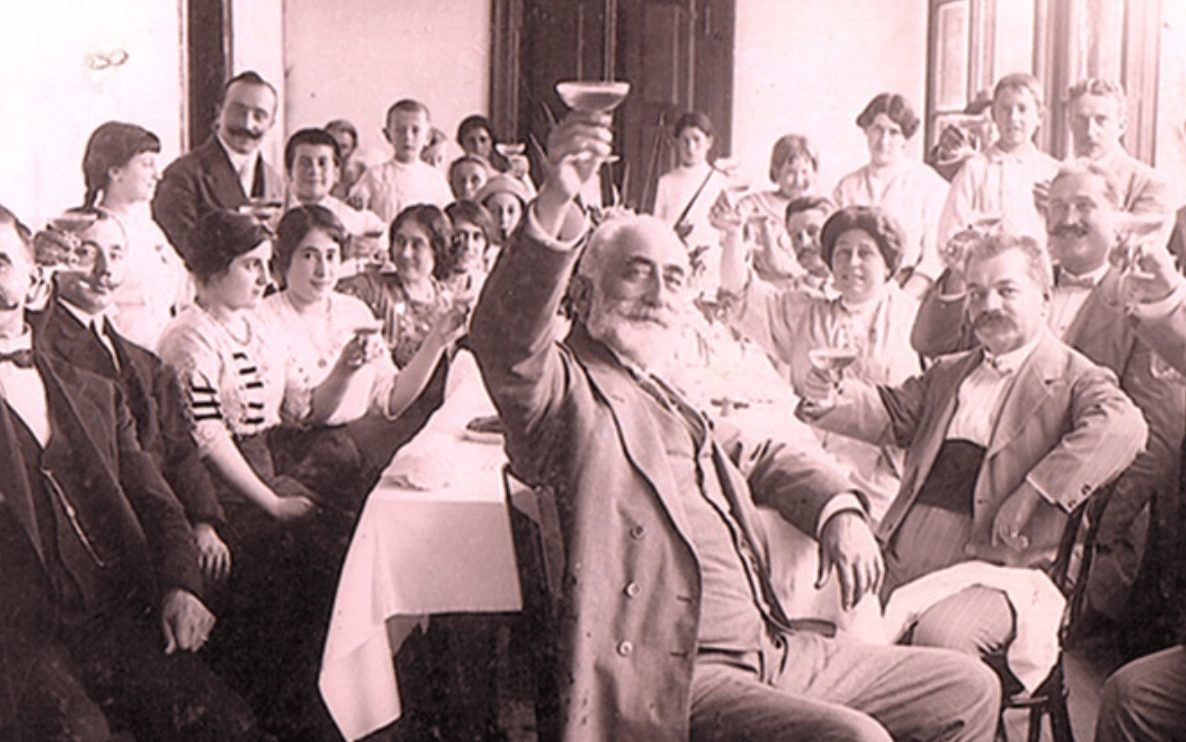 The ceremony was of extreme significance for the colony of Italians, and it turned out to be remarkably well attended by other local Lodges too. When in 1892, the Loja Roma of São Paulo organized a procession in reminiscence of the death of the philosopher Giordano Bruno, the delegates of other Lodges of the City, and the profane community, took part in big numbers. The presence at that ceremony of Cesare Roncaglia, a ‘brother’ from the Grand Orient of Italy in Rome, reveals how close was the relationship of the Italians residing in Brasil with their homeland and how important was for them to reassert such closeness to their Country of birth or descent. It was not coincidental that the Lodge’s banner had been made in Naples !
The ceremony was of extreme significance for the colony of Italians, and it turned out to be remarkably well attended by other local Lodges too. When in 1892, the Loja Roma of São Paulo organized a procession in reminiscence of the death of the philosopher Giordano Bruno, the delegates of other Lodges of the City, and the profane community, took part in big numbers. The presence at that ceremony of Cesare Roncaglia, a ‘brother’ from the Grand Orient of Italy in Rome, reveals how close was the relationship of the Italians residing in Brasil with their homeland and how important was for them to reassert such closeness to their Country of birth or descent. It was not coincidental that the Lodge’s banner had been made in Naples !
In the early months of 1894, seven Lodges in the district of São Paulo separated and formed the Grand Orient de São Paulo. Faced with the schism, the Italian Masonic leadership came off the fence and established a Grand Lodge under the Obedience of the GOI , Rome. It was named Giuseppe Petroni (in honour of the late Italian Grand Master) to emphasise Continue reading FREEMASONRY IN THE ITALIAN COMMUNITY OF BRAZIL (1872-1925)
À Édimbourg, le 27e jour de décembre, l’année de Dieu 1598
Les Statuts et ordonnances devant être observés par tous les maîtres maçons dans le Royaume, établis par William Schaw, Maître des travaux de Sa Majesté [1] et Surveillant Général dudit métier, avec le consentement des maîtres soussignés.
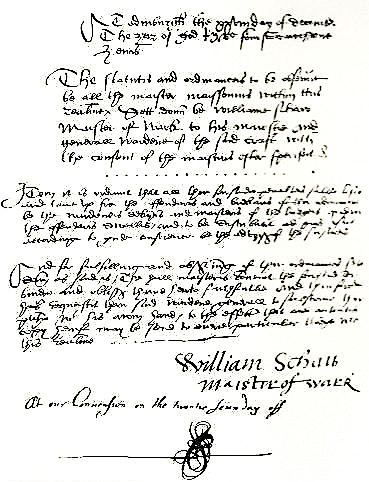
Premièrement qu'ils observent et respectent toutes les bonnes ordonnances précédemment établies par leurs prédécesseurs de bonne réputation concernant les privilèges de leur métier, et spécialement qu'ils soient loyaux les uns envers les autres, et vivent charitablement ensemble comme il convient à des frères assermentés et compagnons de métiers.
Qu'ils obéissent a leurs surveillants, diacres et maîtres en toute chose concernant le métier.
Qu'ils soient honnêtes, sinceres et diligents dans leurs entretiens et droits dans leurs accords avec le maître ou le propriétaire dont ils accepteront le travail, que ce soit à la tâche, en nature, ou contre salaire hebdomadaire.
Qu'ils ne prennent pas de travail, petit ou grand, qu'ils ne soient capables de mener à bonne fin, sous peine de quarante livres monnaie, ou du quart de la valeur de l'ouvrage entrepris, à titre d'amende, et satisfaction donnée au propriétaire du travail, au choix et à la discrétion du Surveillant Général, ou en son absence au choix des surveillants, diacres et inaitres du maître du comté où ledit travail est entrepris et réalisé.
Qu’aucun maître ne prenne le travail d'un autre par-des- sus sa tête, après que celui-ci ait convenu d'un travail, que ce soit par contrat, par acompte ou verbalement, sous peine d’amende de quarante livres.
Qu'aucun maître ne reprenne le travail qu'un autre maître a commencé, avant que le premier ne soit satisfait du travail qu'il a réalisé, sous la même peine.
Qu'un surveillant soit choisi et élu chaque année pour être en charge de chaque loge, telles qu'elles sont particulièrement définies, et que ce soit par le vote des maîtres desdites loges, et l’accord du Surveillant Général si il a le bonheur d'être présent, ou autrement qu'il soit informé de l’élection de chaque surveillant chaque année, afin que le Surveillant Général puisse envoyer des instructions au surveillant élu, si nécessaire.
Qu’aucun maître ne prenne plus de trois apprentis au cours de sa vie, sans un accord spécial des surveillants, diacres et maîtres du comté où l’apprenti habite et réside.
Qu'aucun maître ne reçoive d'apprenti pour un engagement de moins de sept ans, et de même il ne sera pas légal de faire cet apprenti frère et compagnon de métier avant le moment où il aura servi l’espace de sept autres années après l'issue dudit apprentissage, sans une autorisation spéciale accordée par les surveillants, diacres et maîtres assemblés pour cette raison, et qu’un contrôle suffisant ait été effectué sur la qualité, la qualification et l’habileté de la personne qui désire être faite compagnon de métier, et cela sous peine d'une amende de quarante livres prélevée à titre de pénalité pour notre ordre, en sus de la pénalité établie par la loge à laquelle appartient cette personne.
Qu'aucun maître ne soit autorisé à revendre son apprenti à un autre maître ni à le dispenser d'années d'apprentissage en lui vendant ces années, sous une peine de quarante livres.
Qu'aucun maître ne reçoive aucun apprenti sans le signifier au surveillant de la loge où il habite, de façon que le nom dudit apprenti et sa date d’engagement soient inscrits correctement dans le livre.
Qu'aucun apprenti ne soit entré sans que le jour de son entrée ne soit inscrit dans le livre.
Qu'aucun maître ou compagnon de métier ne soit reçu ou admis sans la presence de six maîtres et deux apprentis entrés, le surveillant de la loge étant un desdits six, et sans que le-jour de la réception dudit compagnon de métier ou m maître ne soit régulièrement enregistré, son nom et sa marque insérés dans ledit livre avec les noms des six examinateurs et des deux apprentis entrés, les noms des parrains qui seront choisis pour chaque personne devant être aussi insérés dans le livre. À condition toujours que nul ne soit admis sans un chef- d'œuvres et un contrôle suffisant de son habileté et de sa valeur dans sa vocation et son métier.
Qu'aucun maître n'accepte un travail de maçon sous la responsabilité ou le commandement de quelque autre artisan qui aurait pris directament ou indirectement un travail de maçon.
Qu'aucun maçon ou compagnon de métier ne reçoive un cowan pour travailler dans sa société ou compagnie, ni n'envoie aucun de ses servants travailler avec des cowans, sous la peine de vingt livres par personne contrevenante.
Qu'il ne soit pas possible pour un apprenti entré d’accepter une tâche, ou de travailler pour un pro priétaire, pour une somme excédant dix livres, sous la peine susdite de vingt livres, et ce travail étant fait il ne pourra plus comprendre sans autorisation des maîtres ou du sur- veillant où il réside.
Si une question, dispute ou divergence intervient parmi les maîtres, les servants, ou les apprentis entrés, les parties qui tomberont en question ou en débat signifieront les causes de leur querelle au surveillant ou au diacre de cette loge particulière avant vingt-quatre heures sous une peine de dix livres, de façon qu'ils puissent être accordés et reconciliés, et leurs divergences supprimées par leur dit surveillant ou diacre, ou maître; si une des parties devait rester exigeante et obstinée qu'elle soit privée du privilège de sa loge et interdite de travail jusqu'au moment où elle acceptera de soumettre sa volonté à la raison exprimée par les surveillant, diacre et maître.
Que tout maître, entrepreneur de travaux, fasse très attention à ce que ses échafaudages et passerelles soient surement placés et fixés, de façon à éviter que par sa négligence et son incurie il n’inflige de dommages ou de blessures à ceux qui travaillent sur ce chantier, sous peine d'être interdit de toute responsabilité de Maître ayant en charge un travail, et d'avoir à travailler toute sa vie sous les ordres d'un maître , ou avec un maître principal ayant charge du chantier.
Aucun maître ne recevra ou ne rétablira l’apprenti ou le servant d'un autre maître qui aurait fui le service de son maître, ni ne le gardera en sa compagnie après avoir appris les faits ci-dessus, sous peine de quarante livres.
Que toute persoime du métier e maçon se rassemble en lieu et place légalement convenus, sous peine de dix livres.
Que tous les maîtres qui pourraient être convoqués pour une assemblée ou un rassemblement jurent de leur grand serment de ne cacher ou celer ni faute ni méfait accomplis les uns contre les autres, ni les fautes ou méfaits que quiconque aurait accomplis à l’encontre d'un propriétaire de travaux, pour autant qu’ils en aient connaissance, et cela sous la peine de dix livres à prélever sur tous ceux qui auraient caché lesdites fautes.
Il est ordonné que toutes les pénalités ci-dessus soient prises sur les offenseurs ou transgresseurs de ces ordonnances par les surveillants, diacres et maître de loges de leur lieu de résidençe, et distribuées ad pios usus en bonne conscience selon l'avis des susdits.Et pour remplir et observer ces ordonnances, ainsi définies, tous les maîtres rassemblés ce jour s’engagent et s’obligent ici en toute conscience, et demandent donc que ledit Surveillant Général signe les présentes de sa proper main, afin qu'une copie authentique puisse être envoyée à chaque loge particulière du Royaume.
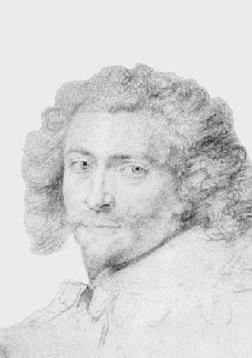 William Schaw, Maître des Travaux
William Schaw, Maître des Travaux
[1] Jacques Stuart (né le au château d’Édimbourg – décédé le à Theobalds House) est roi d’Écosse sous le nom de Jacques VI
From its very beginning Masonry has had in its ranks true agents of socio-political change and Freemasons who have distinguished themselves in the Liberal Arts and Science around the world. All those excellent men embraced the sacred ideals of Liberty, Equality and Fraternity and took part in the civil struggles of all five Continents. The list includes: Cromwell, Locke and Hobbes in England; Grotius and Spinosa in Holland; Voltaire, Diderot, Rousseau, Montesquieu and Robespierre in France. George Washington in the United States, Hidalgo in Mexico, Bolívar, San Martín and Francisco de Miranda in South America.
Prominent in the history of Mexico are four major phases , all of them characterized by traces of nationalism. They are:
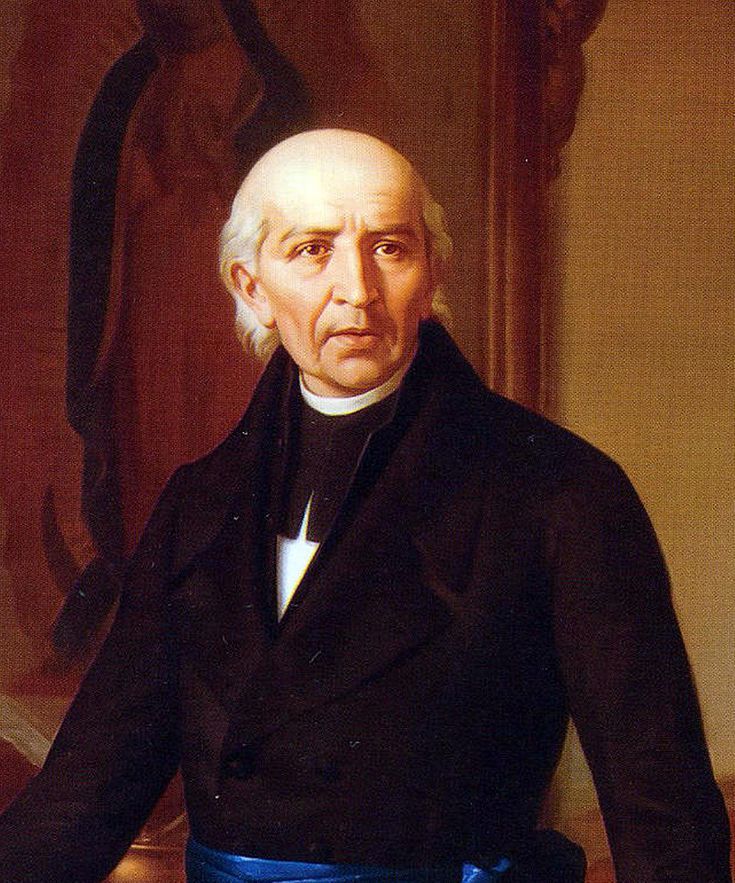
Each of these phases had its own interpreter, whose name alone suffices to describe each Era in the history of Mexico in which he operated. They are:
Freemasonry has shown the world that the men it shapes in the silence of its Lodges, know how to achieve and defend the civil rights and liberty of people. At the same time, Masonry has also proven to be an Institution that, when needed, can act with great prudence. One of the obligations to which a Freemason swears is that of respecting the legality of an established Government. Masonry however does not make cowards, but neither does it form inconsiderate people.
“Thinking without acting is sterile, but acting without thinking is reckless.”
Filled with courage and a sincere desire for enlightenment , the brothers Mateos and Cayetano Rinaldi, amongst other Freemasons, in a meeting that took place on the 14th of August 1825, put forward the plan to establish a new Masonic Rite. They did so inspired by the conviction that Masonry should preserve its purity and the Order should be one throughout the globe and should share a common background of moral, political, domestic and civil values.
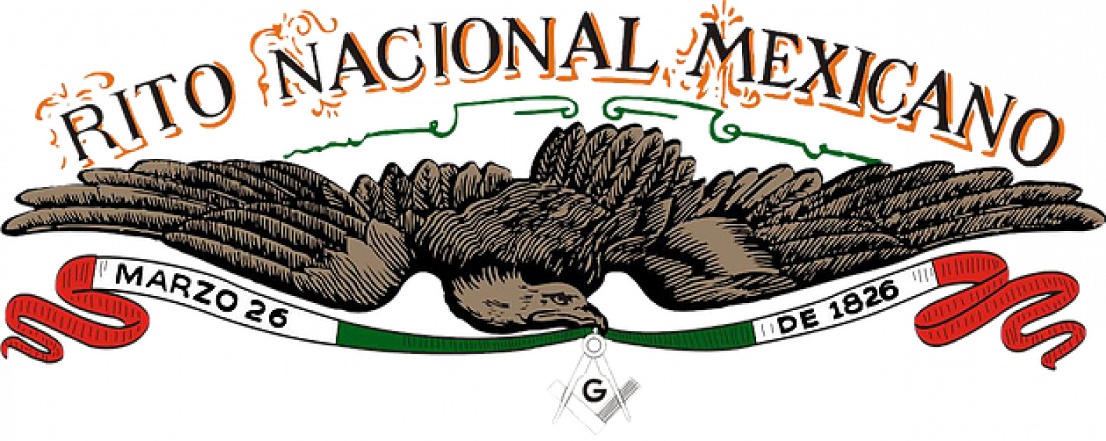 On August 22, 1825, in eastern Mexico, the Brothers Guillermo Gardet, José María Mateos, Guillermo Lamont, Luis Luelmo y Goyanes, Cayetano Rinaldi, Carlos Rinaldi, Juan María Mateos, Francisco Ocampo and Mariano Rodríguez met as part of a Commission instituted to discuss and decide on the Masonic regulations for Mexico.
On August 22, 1825, in eastern Mexico, the Brothers Guillermo Gardet, José María Mateos, Guillermo Lamont, Luis Luelmo y Goyanes, Cayetano Rinaldi, Carlos Rinaldi, Juan María Mateos, Francisco Ocampo and Mariano Rodríguez met as part of a Commission instituted to discuss and decide on the Masonic regulations for Mexico.
They agreed that:
1. The Mexican National Rite was to be set up in Law; that the founding members were to be regular masons of accepted rites; that the Mexican National Rite should be autonomous of any other in the world , as is the Mexican nation independent of the other powers. 2. A Supreme Great Orient [5] and Great Mexican National Lodge should govern the Mexican National Rite , and should any meeting that worked this Rite not be legally authorized, it would be regarded unlawful. 3. The symbolic degrees would be the same in number, as it is in all the established Rites and universal Freemasonry, that is to say: Apprentice, Fellow or Companion and Master, plus six upper degrees that would cast the Rite’s General Regulation. 4. In any city of Mexico, even if not a Province Capital, where there are five regularly constituted Lodges, a Grand Lodge could be installed. However, there cannot be more than one Grand Lodge in each Province. 5. Mexican Freemasonry would have no purpose other than arousing in everybody the purest sentiments and the practice of all virtues, and therefore work towards teaching man how to respect and love that which virtue and wisdom consecrate to humanity as timeless principles. Mexican Freemasonry would also establish the symbolic mysteries i.e. the ties that unite the members of the Grand Family which come by meeting always under the auspices of harmony and true brotherhood.
But after its formation, the Mexican National Rite clashed with the prejudices of the society of the day that branded it irregular. Its raison d’etre was challenged by having nine degrees. Did those who objected forget that vanity was the guide to the creation of the high degrees of Scottish Freemasonry and that only the Masonic Authorities’s tolerance allowed its recognition ? To overcome arguments and objections like these, the Mexican National Rite was established in Law.
Those five Articles mentioned earlier make up the solemn declaration of the Mexican National Rite. They represent the ancient Landmarks, the essential principles of Freemasonry as regulated by the English James Anderson’s [6] Constitutions issued at the request of the lodges that formed the Grand Lodge of England.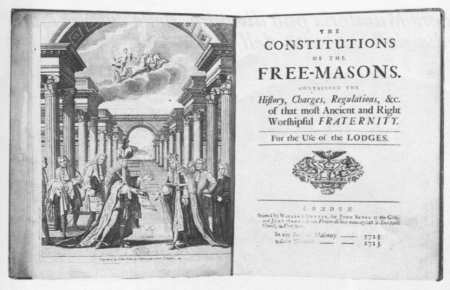 They also sum up the essence, mark the direction and define the philosophical ideological distinction of what we call Scottish Freemasonry.
They also sum up the essence, mark the direction and define the philosophical ideological distinction of what we call Scottish Freemasonry.
After its foundation, the Mexican National Rite went on to set out its own Constitutions which proclaimed the sovereignty of the Mexican Rite and defined its nine degrees:
On 26th March 1826, the first National Mexican Grand Lodge, named “La Luz”, was installed.
At the General Congress held in 1833, the Mexican National Rite brought in a set of reforms, which included the acceptance of women in Freemasonry based on the principle that it was imperative to form the character of all Mexican citizens regardless of their sex. Other reasons for setting up the reforms were:
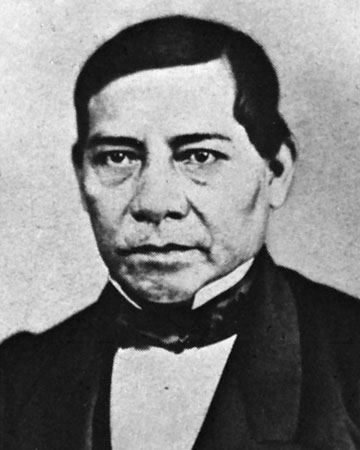
Thanks to the enlightened President Benito Juárez, a modern political Constitution was passed in 1857, which brought to an end the power of the Roman Catholic Church in Mexico. That reform, however, caused an uprising and started a civil war known as the “War of the Reforms” which ended in a triumph for the liberal forces over the conservatives. In 1861, the implementation of the reformed laws secured a divorce between the Church and the State, which in consequence reclaimed all the former’s possessions, allowed freedom of worship and introduced civil marriage.
All along , the conservative forces were pursuing an attempt to bring into the country a ruler that would reinstate their cherished traditional political model. The opportunity presented itself when France, Spain and Great Britain in an attempt to recover the national debt that the near bankrupt Mexico had accrued during the internal civil war, sent punitive expeditions in the winter of 1861. The Spanish and English left the following year but France had other plans as it intended to expand its influence in Central America. In the pursue of such objective and after some long negotiations, on 10th June 1864 France installed the ambitious Hapsburg ArchDuke Maximillian [7] as head of State with the title of Emperor of Mexico . After that event the Mexican National Rite formally lowered its columns.
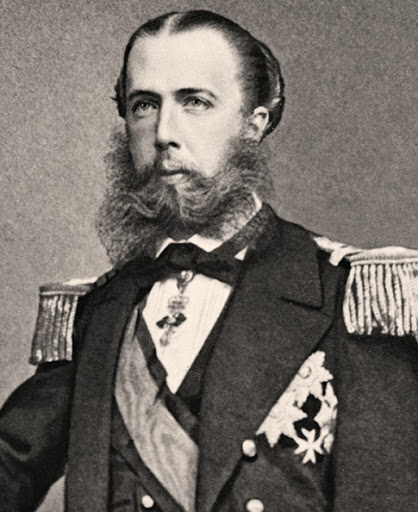
In 1916 the Mexican National Rite fought an ideological war against Venustiano Carranza [8], the then president of the Mexican Republic. The members of Parliament who were also Freemasons and were led by Francisco J. Mújica [9] , defeated the Carrancistas conservative proposed articles 3, 27, 123, 130, etc. of the Constitution and redrafted them in the workshops of the Mexican National Rite. We can thus proudly state that the Mexico Constitution of 1917 was an expression of the Masonic ideals !
It is evident from history that Freemasonry influenced the intellectual, political and civil life of many countries on earth. Personally, I see Freemasonry as the pathway to fulfillment and the means for creating a society where men of good costumes concentrate all their efforts on community service, man’s welfare and regard for customs and traditions.
Translated and adapted by Aldo Reno from : Masoneria y el Benemerito Rito Nacional Mexicano, by Víctor Hugo Téllez Ramírez
If you wish to know more about the History of Freemasonry in Mexico , then I suggest you click here and will be redirected to the very interesting paper written by Brother Peter Ingram of the United Masters Lodge No. 167.
Bibliography:
[1] Don Miguel Hidalgo y Costilla or Miguel Hidalgo – Born 8 May 1753,Corralejo de Hidalgo, Mexico, Died 30 July 1811,Chihuahua, Mexico. Was a Spanish Catholic priest, a leader of the Mexican War of Independence, and recognized as the Father of the Nation.
[2] Benito Pablo Juárez García 21 March 1806, San Pablo Guelatao, Mexico, Died 18 July 1872, National Palace, Mexico City, Mexico. Was a Mexican lawyer and politician, who served as the 26th president from 1858 until his death in 1872. He was the first president of Mexico who was of indigenous origin.
[3] Francisco Ignacio Madero González, Born 30 October 1873, Parras de la Fuente, Mexico, Died 22 February 1913,Mexico City, Mexico. Was a Mexican revolutionary, writer and statesman who served as the 33rd president of Mexico from 1911 until shortly before his assassination in 1913.
[4] Lázaro Cárdenas del Río – Born 21 May 1895, Michoacan, Mexico. Died 19 October 1970, Mexico City, Mexico. Was a general in the Constitutionalist Army during the Mexican Revolution and a statesman who served as President of Mexico between 1934 and 1940. He is best known for nationalization of the oil industry in 1938 .
[5] The three Craft Degrees are controlled by a Grand Orient which is similar to a Grand Lodge except that it is ruled by a self-perpetuating Council, the ordinary Mason having no say in the government of the Craft. (ref. Early Mexican Freemasonry: A confused chapter in our history, by Bro. Peter Ingram, “The Skirret”)
[6] Dr James Anderson – Born 1679,Aberdeen – Died : 28 May 1739, London. Grand Warden of the Grand Lodge of London and Westminster. He was commissioned in September 1721 by the Grand Lodge to write a history of the Free-Masons, and it was published in 1723 as The Constitutions of the Free-Masons.
[7] Maximillian I Emperor of Mexico (Fernando Maximiliano José María de Habsburgo-Lorena ,Born 6 July 1832 Vienna – Died 19 June 1867 Santiago de Queretaro, Mexico) and a younger brother of Emperor Franz Joseph I of Austria,
[8] José Venustiano Carranza De La Garza – Born 29 December 1859, Cuatrocienegas Municipality, Mexico , Died 21 May 1920, Tlaxcalantongo. He was one of the main leaders of the Mexican Revolution, whose victorious northern revolutionary Constitutionalist Army defeated the counter-revolutionary regime of Victoriano Huerta and then defeated fellow revolutionaries after Huerta’s ouster
[9] Francisco José Múgica Velázquez – Born 3 September 1884, Tingüindín, Mexico – Died 12 April 1954, Mexico City, Mexico. He was a military revolutionary, Major General and Mexican politician. He participated in the Constituent Congress of 1917 that produced the Constitution of Mexico.
The purpose of this paper is to expand some thoughts on the ceremony of Raising and its history in Freemasonry. The story of the Third Degree presents several problems. If we consider the basic premise that just before the completion of King Solomon’s Temple in the 2896 Anno Lucis or 975 BCE [1] (these dates vary in different editions) , there was a conspiracy of 15 Fellowcraft to obtain the secrets of the Third Degree.
It could not have been a Raising since Hiram Abiff was still alive. The only Third Degree we know came as a result of his death. Presumably Fellowcraft would only have been appointed if they were honourable men, whether they were actual masons or free and speculative ones. How would one find so many (admittedly 12 recanted and only three conspirators remained) who were prepared to resort to violence and even commit murder of someone for whom they would surely have had respect, simply to obtain some secrets? These they were going to learn anyway in due course, so that the story creates a lack of credibility.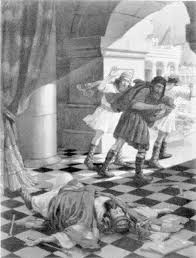
Having killed their master, the candidate of the degree is made to represent him and is symbolically raised from death by various artifices (i.e. the five points of fellowship etc). He is then told the remainder of the story known generally as the “Traditional History”. In this, King Solomon sends 15 trusty Fellowcraft (9 in early French rituals) to search for Hiram Abiff, assuming he may have been killed in an attempt to extort from him the secrets of the Third Degree. This is surely putting subsequent knowledge retrospectively in the minds of the protagonists involved.
Three lodges of five Fellowcraft were sent to search. The second group finds Hiram Abiff indecently buried, reports this to King Solomon who orders him to be exhumed and reburied as near the Holy of Holiest as Israelite law would allow. (This has no parallel in the Bible or the Talmud[2]). Meanwhile, the signs of the Third Degree become the anguished gestures of the second group of Fellowcraft and are ordained to remain until the original signs (whatever they were meant to be) are restored!
The three Fellowcraft conspirators responsible for the crime are found by the third group of Fellowcraft, in a cave near Joppa [the ancient city of Jaffa, now the oldest part of Tel Aviv].
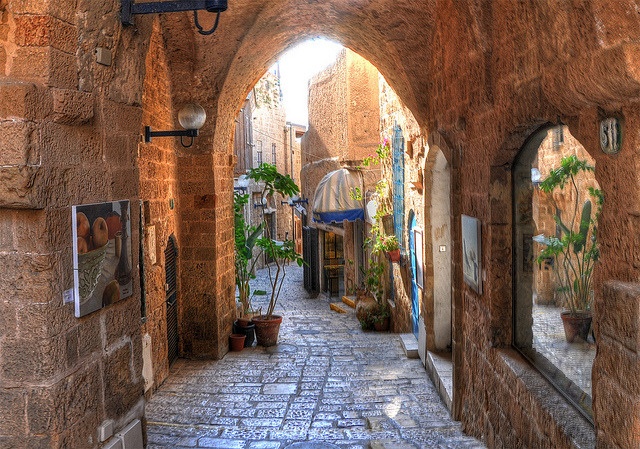
Ratisbonne
Au nom de Dieu le Père, du Fils, du Saint-Esprit et de sainte Marie, mère de Dieu, de ses bienheureux saints serviteurs, les Quatre Saints Couronnés d’étemelle mémoire, nous considérons que pour conserver amitié, union et obéissance, fondement de tout bien, de toute utilité et bienfait de tous, princes, comtes, seigneurs,localités et couvents, réalisant actuellement et dans le futur, églises, bâtiments de pierre ou constructions, nous devons former une communauté fraternelle ; cela pour le bien et l’utilité de tous les maîtres et compagnons du métier des tailleurs de pierre et des maçons en terre allemande, surtout pour éviter toute discussion, échec, soucì, dépenses et dommages provenant de désordres et de transgressions à la bonne règle.
Nous nous engageons pour opérer tous les règlements pacifiquement et à l’amiable. Pour que notre entreprise chrétienne soit valable en tout temps, nous, maîtres et compagnons de ce dit métier, originaires de Spíre, Strasbourg et Ratisbonne, en notre nom et au nom de tous les autres maîtres et compagnons du dit métier ci-dessus mentionné, nous avons rénové et clarifié les vieilles traditions et nous nous sommes constitutes dans un esprit freternel en un groupement et nous sommes engagés à observer fidèlement les règlements ci-dessous définis et cela pour nous-mêmes et pour nos successeurs. Continue reading LE PRÉCURSEURS: Les Statuts de Ratisbonne (1459)